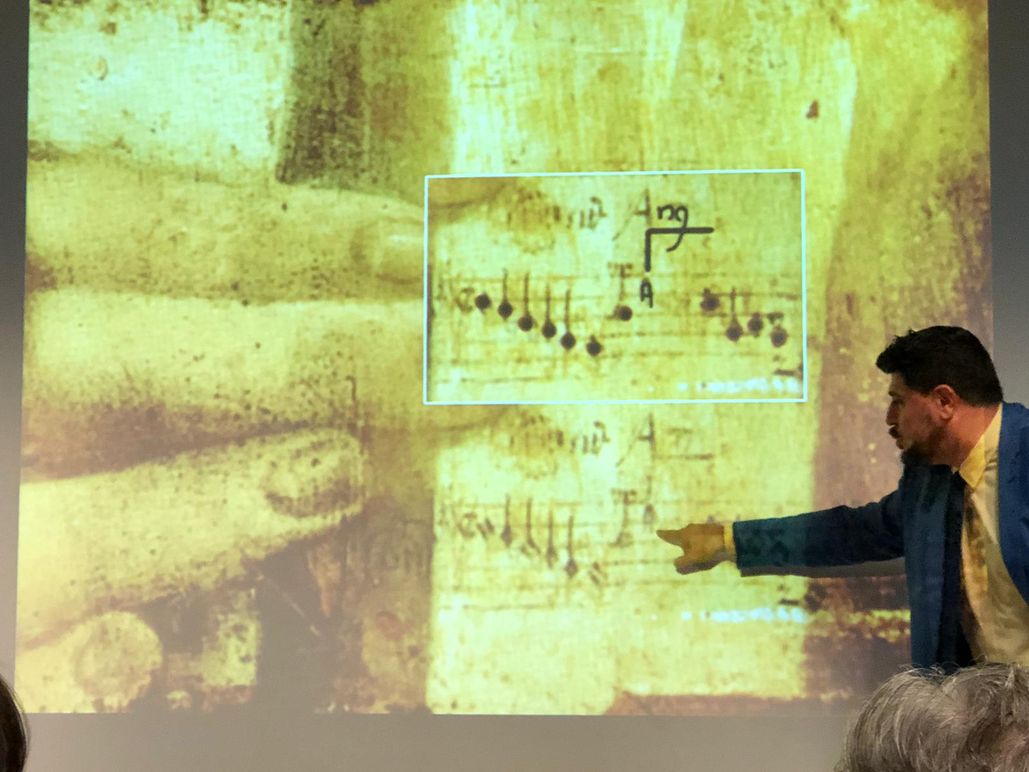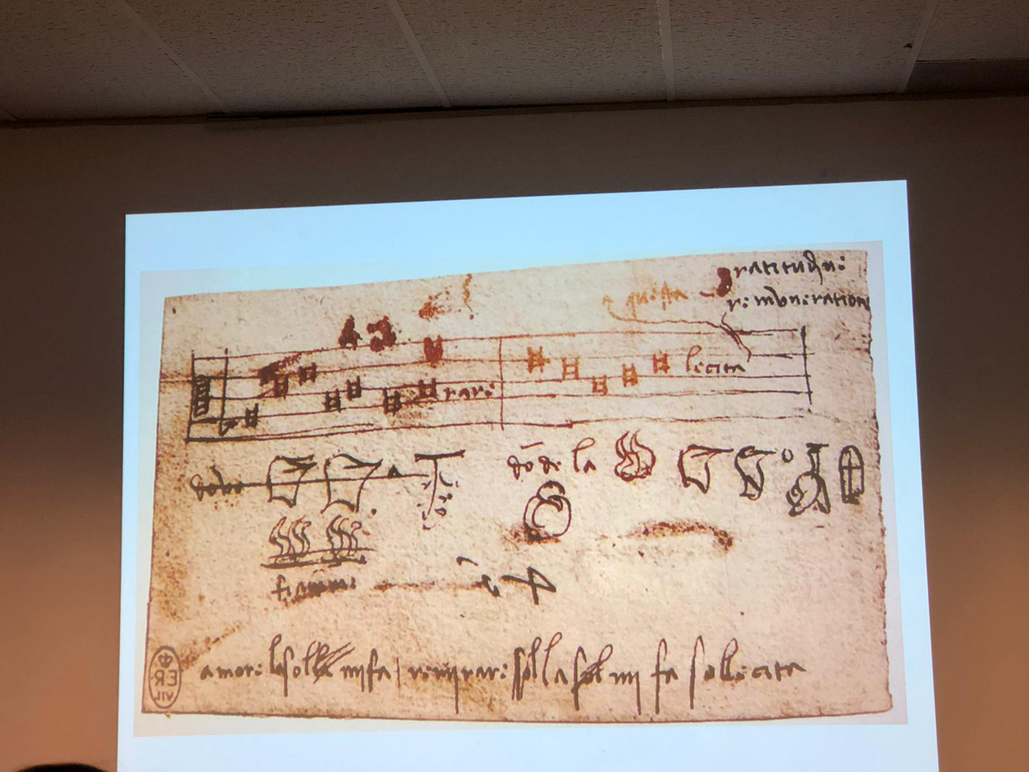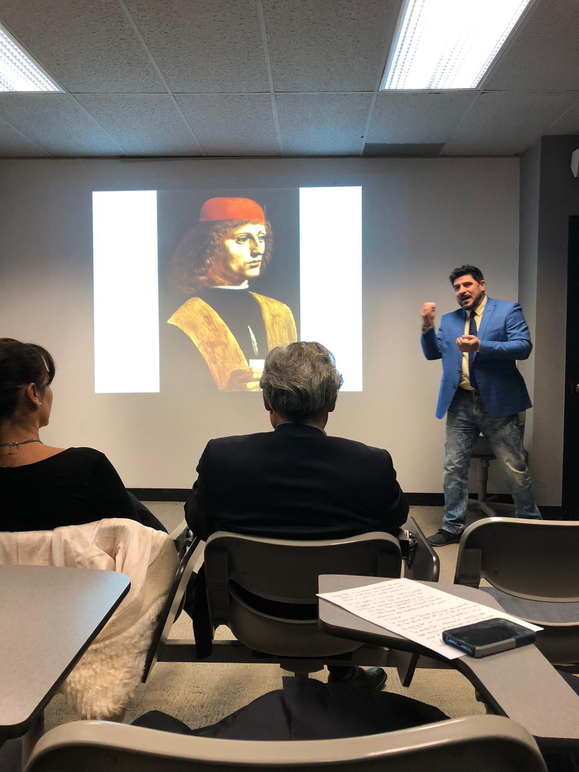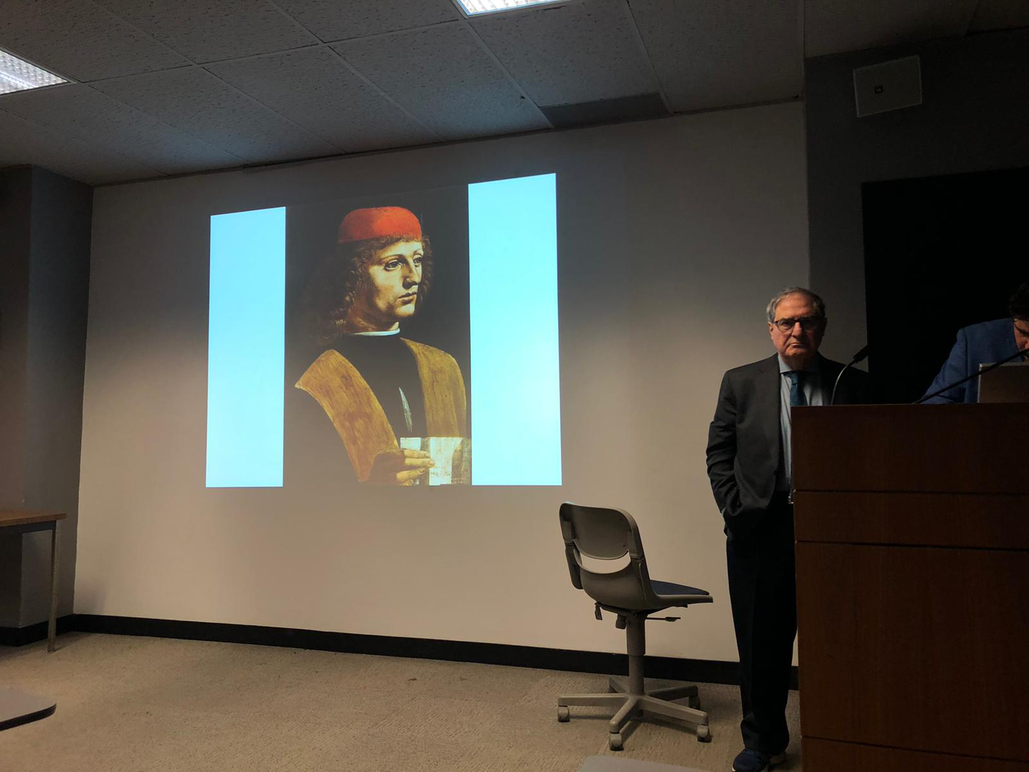The Secret Message in Leonardo's Painting
Fordham University hosted the presentation of the research conducted on “Portrait of a Musician,” recently attributed to Leonardo da Vinci, introduced and organized by Professor Joseph Perricone, who teaches Italian and Comparative Literature at Fordham.
For this reason he invited Sicilian researcher and art historian Giuseppe Petix, who confidently affirmed: “This painting is in my opinion by Leonardo, it can only be attributed to him.” This declaration is important because, if he is correct, it would make this the first painting by the artist whose subject is a man rather than a woman.
The years-long research conducted by Petix began in 2013 with the publication of his “Inside the gaze,” a book that is now perserved and archived in Vinci’s Leonardian Library.
The son of an artist mother side but also of a scientist father, Giuseppe has always united artistic and scientific reasoning: looking for beauty as well as for solutions. This way of working has defined his approach to art history, with a particular focus on the Renaissance and on the paintings of Leonardo, bringing him to the decodification of Portrait of a Musician.
This is the first ever research aimed at decoding the message hidden within the painting. Before him, others have studied this work, attributing completely different meanings to it, which are however not incorrect, as Petix himself says.
What caused Petix to focus on the Musician, was the way in which the painting presents itself to the spectator. Dated to around 1485, Portrait of a Musician is a work of oil tempera on a small wooden panel, 40x30 centimeters, preserved in the prestigious Ambrosian Library in Milan.
The subject of the painting holds a card in his hand, which faces the viewer, suggesting that Leonardo wanted its contents revealed. Furthermore, the lights and shadows of the painting point towards a specific spot on the card, as if to say: “there’s something here, pay attention.”
Another hint to the presence of a hidden message lies in Leonardo’s love for riddles. The painter was in fact known for bringing such word games to the courts he frequented, amusing its princely inhabitants. We shouldn’t therefore be surprised if the notes on the card can be interpreted as a musical puzzle, not only because of their peculiar postioning, but also due to the presence of signs, letters, and colors between each one.
“Let’s not forget that Leonardo’s importance is always in the details. And there clearly is a message on this card. A message that became unique and immortal, like Leonardo’s art and like the myth behind the man.”
Petix also says: “The puzzle on the card was found thanks to the knowledge that we have of the music of the time. A puzzle that once decoded transforms the verse “Oh Re fammi lagnar: Sol l’amore mi fa sollazzar,” which translates to “Oh God, allow me to lament: only love makes me happy.”
A hymn, a prayer, a call for help towards a god, or perhaps a ruler given the use of the term “re,” king. The fact that he is talking about love however gives the idea that we are dealing with superior, ethereal matters. A theory that can be reinforced by what we know of Leonardo and his extensive knowledge of sacred texts. This sentence recalls the lamentations present in the psamls and, more specifically, the “god” mentioned could represent the soul of David.
Following his extensive research, Petix concludes: “My interpretation is one of the many that can be given to the painting. My opinion is that this verse was inserted in the painting to enrich it, to give it a voice. Because, as Leonardo himself believed, a painting is a poem, which though voiceless, can be observed.”
In conclusion, Petix explains: “Once a piece of information is impressed within a work of art, it will remain there forever.”
And that’s the power of art, its beauty, that it never dies even after centuries.






































i-Italy
Facebook
Google+
This work may not be reproduced, in whole or in part, without prior written permission.
Questo lavoro non può essere riprodotto, in tutto o in parte, senza permesso scritto.